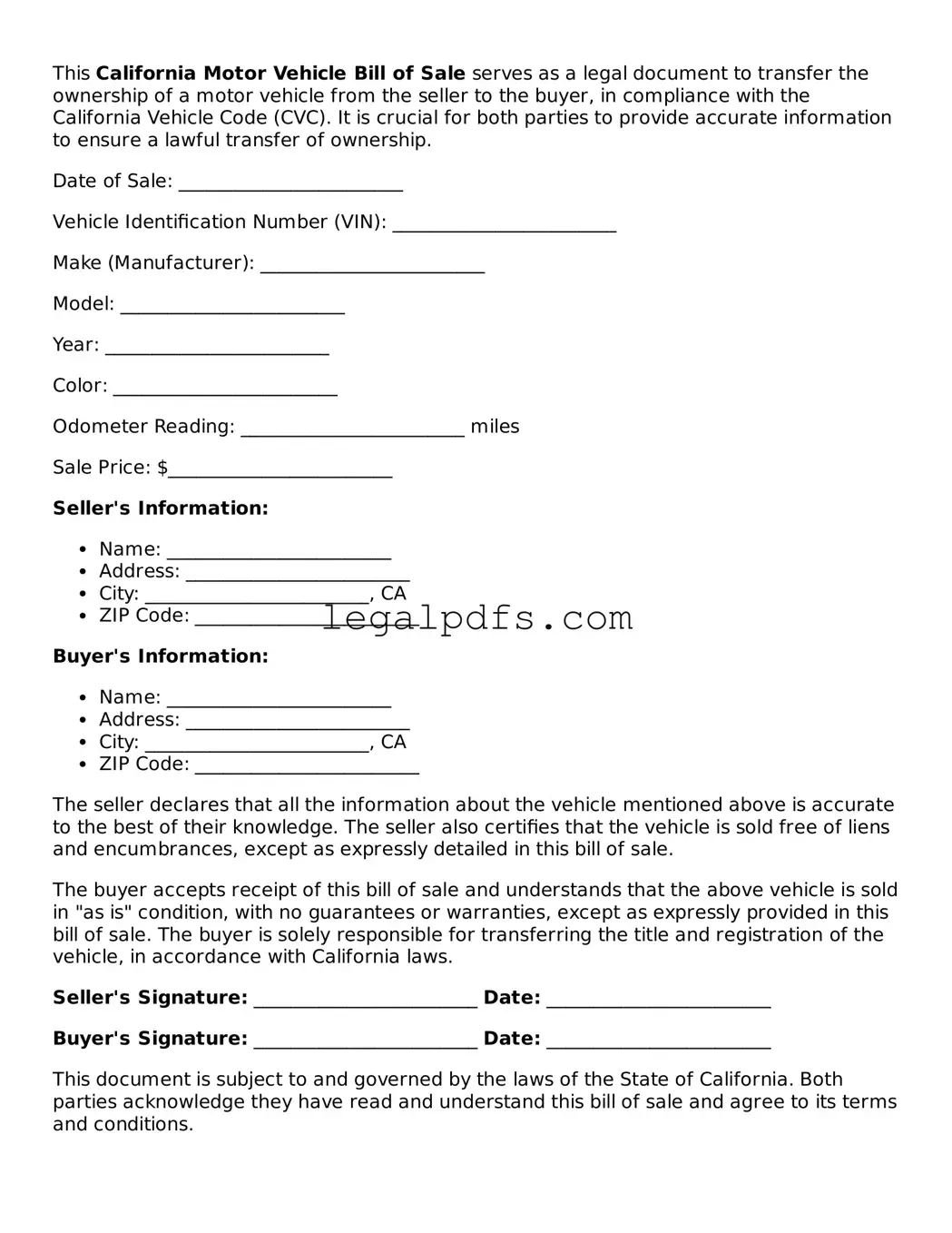What is a California Motor Vehicle Bill of Sale?
A California Motor Vehicle Bill of Sale is a legal document that records the details of a transaction between a seller and a buyer for the transfer of ownership of a motor vehicle. It acts as proof of purchase and is required in the state of California for private vehicle sales. The form includes details such as the purchase price, vehicle description, and the names and signatures of the parties involved.
Why do I need a Motor Vehicle Bill of Sale in California?
In California, a Motor Vehicle Bill of Sale is necessary for several reasons. It serves as a legally binding receipt for the purchase of the vehicle. This document is also crucial for the buyer to register the vehicle in their name at the Department of Motor Vehicles (DMV). Furthermore, it provides an official record that can be used for tax purposes and protects both the buyer and seller in case of future disputes.
What information should be included in a Motor Vehicle Bill of Sale?
A comprehensive California Motor Vehicle Bill of Sale should contain the following information: the date of the sale, names and addresses of the seller and buyer, detailed description of the vehicle (including make, model, year, VIN), sale price, and odometer reading. Additionally, it should have the signatures of both the buyer and the seller, and sometimes a witness or notary public for added legal validity.
Is a notary required for a California Motor Vehicle Bill of Sale?
In California, notarization of a Motor Vehicle Bill of Sale is not a mandatory requirement for it to be legally valid. However, having the document notarized can add a layer of verification and authenticity, making it a stronger piece of evidence in the event of a legal dispute. It's recommended to check with the local DMV or a legal professional to see if notarization could benefit your particular situation.
Can I create a Motor Vehicle Bill of Sale myself, or do I need a lawyer?
It is entirely possible to create a Motor Vehicle Bill of Sale by yourself without the need for a lawyer. Templated forms are available online, or you can draft one with all the required information. Nonetheless, consulting with a legal professional can ensure that your bill of sale is comprehensive, accurately reflects the agreement, and complies with current California laws, which could be beneficial for transactions involving significant amounts or complex details.
How do I file a Motor Vehicle Bill of Sale in California?
Once the Motor Vehicle Bill of Sale is completed and signed by both parties, there is no need to file it with any state agency in California. However, the buyer must submit a completed Notice of Transfer and Release of Liability to the DMV within five days of the vehicle purchase. For registration and title transfer, the buyer should bring the Bill of Sale to the local DMV office, along with other required documents, such as a title transfer form and proof of insurance, during the vehicle registration process.
What if there are errors in the Motor Vehicle Bill of Sale?
If you discover errors in a Motor Vehicle Bill of Sale after it has been signed, it's important to address them immediately. The simplest way is for both parties to agree to make the necessary corrections and then initial the changes. For significant errors or changes, drafting a new Bill of Sale might be more appropriate to ensure clarity and legal accuracy. Both parties should keep copies of the corrected document for their records.
